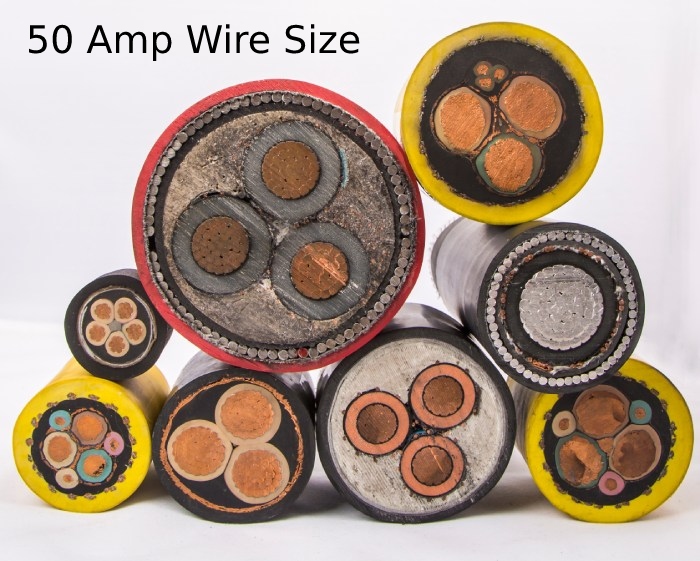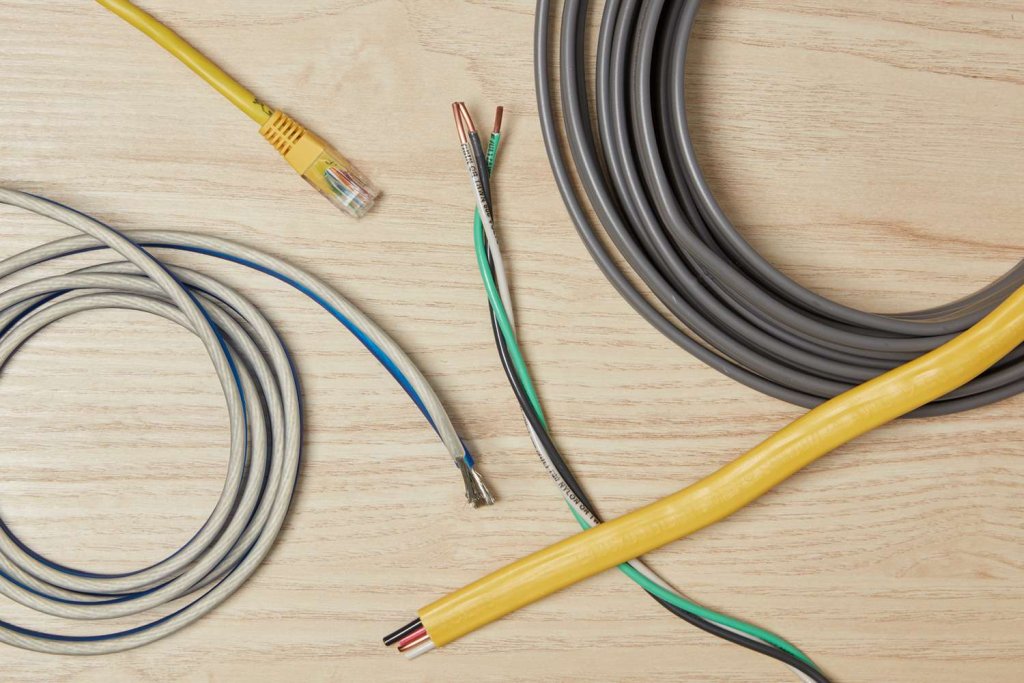If you have a 50 amp electrical system, you could be at ease as it can support a maximum number of heavy-duty appliances. However, when you park your RV at home or in some RV camps, wiring a 50 amp plug can be challenging at first if you are not aware of how to do it yourself. In that case, you might have to rely on professional help or learn to do it correctly.
If you are a complete novice when it comes to handling electrical systems, you might find things a bit confusing at first, but once you understand the color codes and everything else, you will get confident in it.
Therefore, this guide will help you understand how to wire a 50 amp plug correctly and confidently. We have also helped you determine how much wire (in terms of length and thickness) you need to do the wiring of a 50 amp plug or breaker.
Determining the Wire Size for a 50 Amp Plug

First and foremost, let’s begin with the AWG of the 50 amp wire.
The gauge is indicative of the wire thickness. It is a number code associated with the thickness of the wire. AWG represents the standard system used for measuring the gauge as per NEC.
Now, usually, a 50 amp plug will be able to utilize 3 wire sizes, providing ampacity close to 50 amps. These are:
- 8 AWG wire having 50A ampacity, which is too small.
- 6 AWG wire offering 65A ampacity, which is the ideal one to use.
- 4 AWG wire with 85A ampacity, which will be too long.
A 6 AWG wire with 65A ampacity can deliver 240V, 220V,120V, 110V, and 115V.
This is because we have to consider the 80% breaker rule provided by NEC (National Electrical Code). Here’s how to calculate how much ampacity a 50 A wire should have.
Wire Ampacity for 50 Amps = 50A/0.8 = 62.5A Wire
Therefore, in most cases, the 6 AWG wire is the ideal size for a 50 amp plug or breaker. But if the circuit is long, a 4 AWG wire is also suitable to send current over 100 feet distance or more. This is because of every 100 feet increase in length, the wire resistance increases, and a drop of 20% voltage is observed. So, to ensure that the same power (wattage) is available at the output end, the amperage has to increase by 20%.
The 6 AWG wire can handle 65A, but if you increase the length of the wire by 100 feet more, the amperage needed would be:
62.5A x 1.2 =75A
If you use a 4 AWG wire, it can handle up to 85A current. So, the ideal wire size for a 50 amp wire now becomes 4 AWG wire.
So, we can conclude that if you are using a 6 AWG wire for a 50 amp plug, it could be about 100 feet in length. Still, if you need the wire to carry the current over a distance longer than 100 feet, you will have to switch to a 4 AWG wire to ensure that the same power is delivered and to deal with the effect of resistance.
Will You Still Get 110-240V With 6 Awg or 4 Awg 50 Amp Wire?
People frequently confuse power and voltage. You may want to understand if you can use a 6 AWG wire for 50 amps at 240 V and also at 110V. With different volts, only the power changes, but the amps remain the same. The following formula illustrates this:
Wattage = Amps x Volts
11,000 W = 50A x 220V
5,500 W = 50A x 110V

Your electric wires can be composed of different materials; however, varied materials impact the conductivity and even the size of the wire. Silver, copper, aluminum, and brass are common metals of choice for making electric wires.
Copper wire is the best conductor of electricity. When using copper wire, you could stick to the usual 8 AWG or 6 AWG wire size.
But when you go with aluminum wire, which is 70% lighter, cheaper, and 60% less conductive than copper, you must use a 4 AWG wire size for a 50 amp plug or breaker. A 6 AWG aluminum wire can deliver only a 40 amp current.
Other Reasons for Using a 6 AWG Wire for a 50 Amp Plug
Other reasons that support using 6 AWG wire for a 50 amp plug or breaker to provide adequate power output and prevent overheating or frying of the plug, breaker, or appliances are as follows:
- A 6 AWG wire is less expensive than a 4 AWG wire.
- A 4 AWG wire is thicker than the 6 AWG wire.
- A 6 AWG wire is also capable of tolerating minimal power surges.
- It can withstand the usual amount of heating generated while using heavy appliances.
- Finding a 6 AWG wire is way easier as it is commonly used and available in most electrical or hardware stores.
Concluding Thoughts
So, with this, we are wrapping up this blog on how much 6 gauge wire is needed for a 50 amp plug to wire it. From the above examples, illustrations, and discussions, you have hopefully understood that if you can use a 100 feet of 6 AWG wire carrying 50 amp current.
This is ideal for a 50 amp plug. If you require a wire that has to carry current over longer distances, more than 100 feet, then you will have to choose a different size for the same 50 amp plug. Mostly, you need to use a 4 AWG wire for this purpose.
